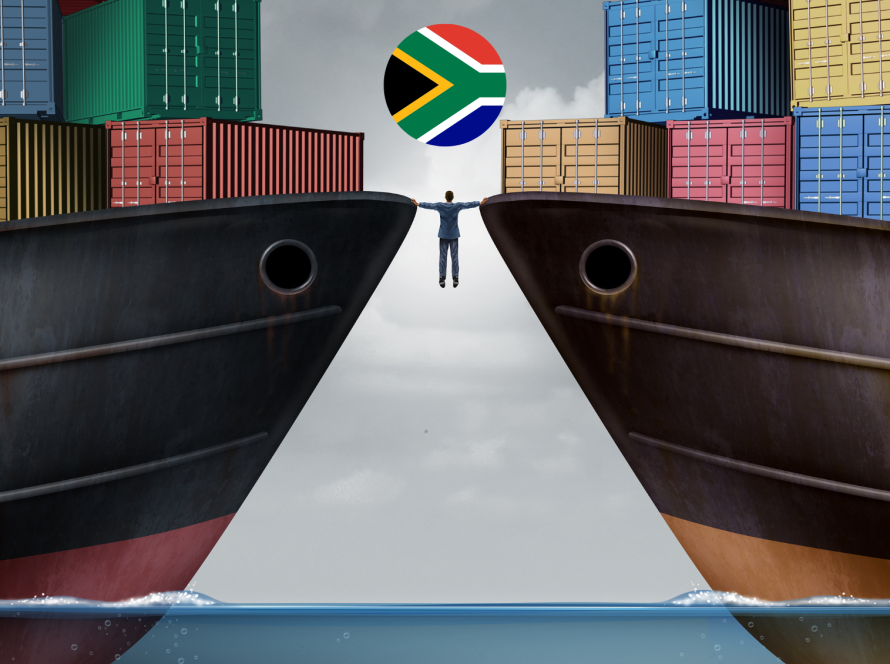Inflationary pressures in South Africa are reshaping the consumer market and retail trends. This economic phenomenon is not just a statistic. It’s a reality that affects consumers’ purchasing power and retailers’ strategies.
Understanding these dynamics is crucial for businesses, especially those navigating the challenges of urbanisation and the rise of e-commerce. It’s about adapting to change and identifying opportunities amidst adversity.
This article delves into the impact of inflation on South Africa’s consumer market. It explores how it influences consumer behaviour and retail strategies. It also highlights the role of e-commerce and supply chain efficiency in this evolving landscape.
Moreover, it provides insights into local retail challenges and the influence of urbanisation. It also discusses the potential of technology in enhancing customer experience and reducing costs.
Understanding South Africa’s Inflation Dynamics
Inflation in South Africa has fluctuated significantly in recent years. Economic conditions, both locally and globally, play a pivotal role in influencing the trajectory of inflationary trends in the region.
Several factors drive South Africa’s inflation dynamics. The major contributors are exchange rate volatility, fluctuating fuel prices, and food costs. Each of these elements impacts everyday financial decisions for consumers and businesses alike.
The consumer price index (CPI) is an indicator of inflation. It measures average price changes over time for goods and services. A rising CPI indicates a decrease in purchasing power, which affects consumer spending habits.
The South African Reserve Bank (SARB) monitors inflation closely and uses monetary policy tools to maintain inflation within target ranges. This is essential to stabilising the economy and encouraging sustainable economic growth.
Understanding these dynamics is crucial for businesses operating in South Africa. It requires constant vigilance and strategic planning. Companies can better prepare for their impact on consumer markets and retail trends by grasping how inflationary pressures evolve.
The Impact of Inflation on Purchasing Power
Inflation has a significant effect on consumer purchasing power. As prices rise, the real value of money decreases, making goods and services more expensive. This reduction in purchasing power forces consumers to reassess their spending.
Household budgets become strained under inflationary pressures. Consumers often prioritise essential purchases, such as food and housing, over discretionary spending, like entertainment or luxury items. This shift in spending habits impacts various sectors differently, depending on the nature of goods and services offered.
Retailers feel the pinch as consumers cut back. Lower spending reduces retail revenue, prompting businesses to adapt their strategies. They may offer promotions or discounts to entice budget-conscious shoppers, aiming to maintain sales during challenging economic periods.
Moreover, the cost of living rises alongside inflation, further straining finances. Families may struggle to maintain their living standards, necessitating lifestyle adjustments. Understanding these impacts helps businesses anticipate changes in consumer behaviour and develop strategies to address emerging challenges.
Retail Strategies in Response to Inflationary Pressures
Retailers must adapt swiftly to the changing economic landscape. Inflation demands innovative strategies to safeguard profitability and customer loyalty. By understanding consumer needs, businesses can tailor their approaches to retain buyers.
Many retailers focus on value-driven offerings. They shift towards affordable products to meet consumer expectations and prioritise value over luxury. Bulk deals and loyalty programs are popular tactics for attracting and maintaining customers.
Cost management becomes essential. Retailers streamline operations and utilise technology to improve efficiency, thereby lowering expenses. They may adopt lean inventory management to reduce waste and optimise stock levels.
Collaboration with suppliers is also critical. By fostering strong relationships, retailers can negotiate better terms and secure reliable supply chains. This effort ensures product availability and cost stability, even amid inflationary challenges. Additionally, these strategies help businesses maintain competitiveness in a tight market, enabling long-term resilience.
E-commerce: A Beacon of Resilience Amidst Economic Challenges
E-commerce has emerged as a strong force in South Africa’s economy. As inflation pressures rise, online retail remains resilient and adaptable. Its growth reflects a shift in consumer preferences toward convenience.
The flexibility of e-commerce lies in its cost-effective solutions. Online platforms help businesses reduce overhead costs compared to physical stores. This allows retailers to offer competitive pricing, aligning with consumer desires for affordability.
Digital innovation continues to enhance the e-commerce experience. Mobile commerce is on the rise, offering customers the ease of shopping from their devices. This shift also supports digital payment methods, increasing transaction efficiency.
Moreover, e-commerce provides vast opportunities for expansion into new markets. Cross-border commerce enables South African businesses to reach a global audience. By tapping into international demand, e-commerce can help offset local economic challenges, promoting sustained growth. Overall, e-commerce is pivotal in helping businesses navigate economic adversities effectively.
The Role of Supply Chain Efficiency in Mitigating Inflation Effects
Efficient supply chains are vital in counteracting inflation’s adverse effects. They help reduce costs and maintain product availability. Streamlined processes enhance overall resilience, which is crucial in volatile economic climates.
Multimodal transportation is a key strategy in boosting efficiency. By integrating different transport modes, logistics costs can be lowered. This approach enables timely delivery, meeting consumer expectations despite inflationary challenges.
Adopting technology in supply chain management enhances performance. Blockchain technology, for instance, offers transparency and reduces transactional costs. These innovations empower businesses to maintain competitiveness amid rising inflation pressures.
Local Retail Challenges and the Urbanisation Factor
Local retailers in South Africa face intense competition from international giants. Rapid urbanisation compounds this challenge. As cities expand, consumer preferences evolve, adding more complexity to the retail sector.
Urbanisation significantly influences retail trends, driving demand for convenient online shopping experiences. However, many local retailers struggle to adapt to these changing dynamics, which disadvantages them.
The urban shift also increases rental costs for physical stores. As space becomes more premium, retailers seek cost-effective solutions. This pressure fuels a shift toward digital platforms, reshaping the local retail landscape.
Leveraging Technology for Cost Savings and Enhanced Customer Experience
Technology plays a crucial role in helping retailers cut costs. Data analytics allows businesses to understand consumer behaviour better, allowing for more accurate inventory management and pricing strategies.
Retailers also harness technology to enhance customer experiences. Digital payment solutions make transactions more straightforward and more secure. Powered by AI, personalisation helps create engaging shopping experiences that meet individual needs.
Moreover, technology supports efficient logistics and delivery systems. This ensures timely product availability and enhances customer satisfaction, resulting in stronger customer loyalty and a competitive edge for businesses.
Future Global Growth Opportunities for South Africa’s E-commerce
South Africa’s e-commerce sector is poised for significant global growth. As digital infrastructure improves, more businesses can reach international markets. This presents opportunities for cross-border trade.
Furthermore, the rise of mobile commerce opens new doors for retailers. With increasing smartphone penetration, businesses can tap into a larger audience. This growth can transform the South African e-commerce landscape.
South Africa also benefits from innovation in payment solutions. Seamless transactions encourage more consumers to shop online, and as confidence in e-commerce builds, South Africa can become a prominent player in the global market.
Conclusion: Adapting to New Realities in South Africa’s Retail Landscape
The retail landscape in South Africa is evolving rapidly. Inflation and urbanisation reshape consumer expectations and behaviours, and businesses must remain agile to survive and thrive. E-commerce presents opportunities for innovation and growth. Leveraging technology can help retailers meet changing demands.
Ultimately, resilience and flexibility are key. Retailers must adapt strategies to navigate economic challenges effectively. Doing so will enable them to seize future opportunities in South Africa’s dynamic market.




